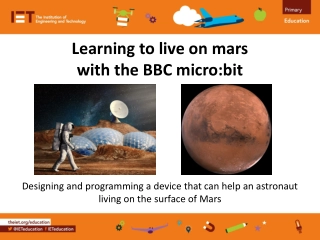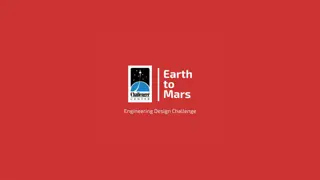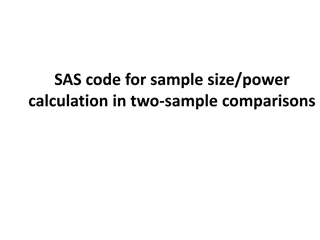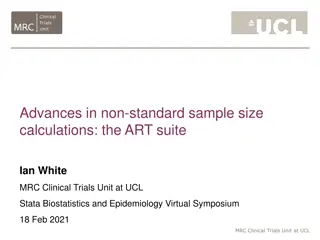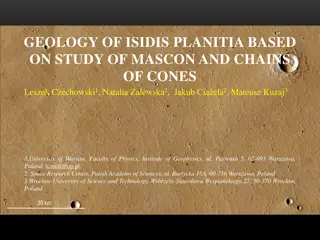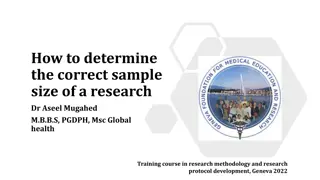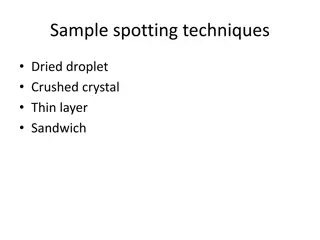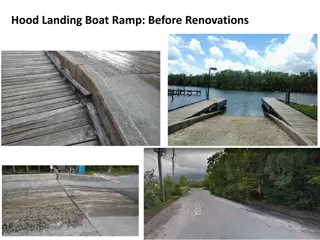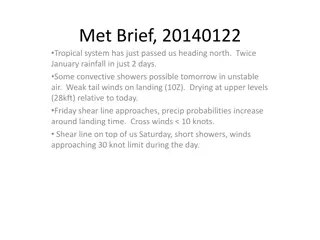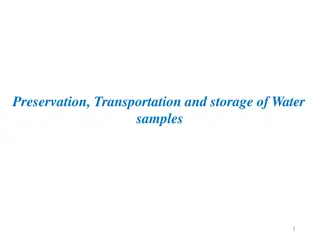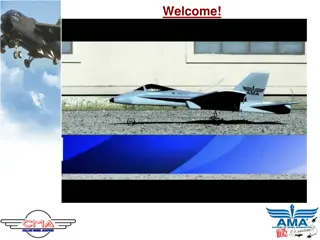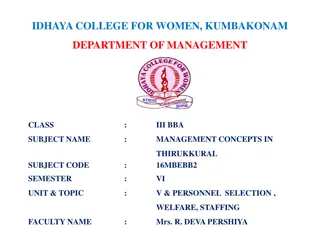Insights into Mars Sample Return Science Inputs for Landing Site Selection
The Mars Program Office at Jet Propulsion Laboratory has conducted a systematic survey to determine landing site priorities for sample return missions. Insights from the astrobiology and cosmochemistry/petrology communities reveal key interests such as geologic age, rock-water interactions, and diversity of low-T geochemical environments. These inputs will shape the selection of landing sites for the Mars Sample Return mission scheduled for 2024.
Download Presentation

Please find below an Image/Link to download the presentation.
The content on the website is provided AS IS for your information and personal use only. It may not be sold, licensed, or shared on other websites without obtaining consent from the author. Download presentation by click this link. If you encounter any issues during the download, it is possible that the publisher has removed the file from their server.
E N D
Presentation Transcript
Returned Sample Science Inputs Returned Sample Science Inputs to Landing Site Selection to Landing Site Selection Lindsay Hays and Dave Beaty Mars Program Office, Jet Propulsion Laboratory, California Institute of Technology with support from Ben Migirditch (Appalachian State University) and Bennett Kapili (Cornell University) JPL URS252725
Introduction Objective Determine landing site priorities as seen by the sample community, who have a major vested interest in the samples that may be returned by means of MSR. Systematic survey of two sectors in the community: Astrobiology Cosmochemistry/Petrology Most deeply held interests/desires flagged = 9/13/2024 2
Astrobiology inputs Largest gathering of astrobiologists of last 3 years Attendance ~750 Landing Site Topic: Pre-meeting focus groups, Plenary panel discussion/presentation, Abstract/talk in technical session 9/13/2024 3
Astrobiology Interests (1 of 5) Geologic Age A geological period with wet/warm (habitable) environments. Not too early, not too late: too early (life hasn t had a chance to start) too late (want enough time to evolve, but not so much that life disappears) A range of geologic ages important for evaluation of time-dependence. 9/13/2024 4
Astrobiology Interests (2 of 5) Environments Require rocks that have interacted with a significant amount of water over a long period of time. Three main possibilities: a. Sedimentary rocks deposited in long- lived standing water (lake, ocean), b. Sustained near-surface hydrothermal conditions (e.g. sinter), c. Deep, subsurface high-T hydrothermal Listed in draft priority order Note: Current weight of community opinion appears to favor a) over b). However, this has not been sufficiently vetted. Probably need a focused conference on this topic in 2016. 9/13/2024 5
Astrobiology Interests (3 of 5) Diversity of low-T geochemical environments Diversity increases odds of obtaining a sample with high biosignature preservation potential. Mineralogic diversity is a proxy for environmental diversity (e.g. composition, pH, temperature, water-to-rock ratio, duration, etc.). Useful for understanding the historical martian climate, and aqueous surface and near-surface processes. 9/13/2024 6
Astrobiology Interests (4 of 5) Sample Context Sample context is critical to making defensible interpretations. Need stratigraphy exposed in outcrop. The issue of context is important enough that returning to a previous site where some context has already been established could be advantageous. Have not established community consensus position on this. 9/13/2024 7
Astrobiology Interests (5 of 5) Organic Geochemistry Samples that would preserve indigenous organic molecules. A key strategy is to access sites where rock is only recently exposed to radiation, e.g.: Sites with active erosion Recent shallow craters 9/13/2024 8
Cosmochemistry Inputs Most important annual gathering of cosmochemists/meteoriticists official conference of the Meteoritical Society Attendance ~400 Landing Site Topic: Pre-meeting focus group, Brown bag lunch discussion/presentation, Abstract/poster in technical session 9/13/2024 9
Cosmo/Petrology Interests (1 of 5) Diversity of Igneous Rocks Sample diversity in all important measures is important. Years of experience with paired meteorites shows that sample science advances only with rocks that are different from each other. Multiple potential strategies available to achieve diversity (breccia, conglomerate, alluvial fans, etc.). Note: Although sample context is important to both the A/B and cosmo/petrology communities, the required scale is different. 9/13/2024 10
Cosmo/Petrology Interests (2 of 5) Calibration of crater-counting chronology method A datable unit with a defined crater retention age (Priority: Hesperian age). No meteorite data from Hesperian: the critical point for refining the crater chronology curve. Best candidate: lava flow or an impact melt sheet. 9/13/2024 11
Cosmo/Petrology Interests (3 of 5) Diversity of low-T geochemical environments Minerals indicating conditions of alteration (pH, temperature, water-to-rock ratio, duration, etc.). Aid in the understanding of historical Martian climate, and aqueous surface and near-surface processes. Clay-bearing rocks specifically called out as of interest. Ground-truth for remote sensing provided by analysis of diverse mineral samples. 9/13/2024 12
Cosmo/Petrology Interests (4 of 5) Ejecta from Deep Craters Samples from the Martian interior (e.g. upper 1-2 km) may be available by this means. Potentially important dimension of understanding Mars as a system. Look for ejecta rays from nearby craters that cross the landing site. These samples may also be of some interest to astrobiology because of the potential for evidence of modern life. 9/13/2024 13
Cosmo/Petrology Interests (5 of 5) Metamorphosed terrane Regional metamorphic processes would significantly complicate petrology, low-T geochemistry, and geochronology investigations. Recommend avoiding locations with concentrations of metamorphic minerals (prehnite, chlorite?). Also introduces unwanted complications for astrobiology. 9/13/2024 14
SYNTHESIS RETURNED SAMPLE SCIENCE CRITERIA FOR SITE SELECTION 9/13/2024 15
DRAFT RSS Criteria For Planning and Discussion Purposes Only Shorthand Criteria AB Cosmo Regional geology spanning a significant range of geologic age (wider range is better), and rocks must be present from the period of abundant surface water (TBC: LN, EH) Age Range, Surface Water Rocks that preserve evidence of extensive water rock interaction. Prioritization: 1. Sedimentary rocks deposited in long-lived standing water (lake, ocean); 2. Sustained near-surface hydrothermal conditions (e.g. sinter); 3. Deep, subsurface high-T hydrothermal Water-rock Interaction Potential to acquire diverse igneous samples (some diversification strategies: outcrop, float, alluvial fan, conglomerate, ejecta, breccia) Igneous Diversity Datable unit with a defined crater retention age (Priority: Hesperian age) Crater Calibration Ejecta from deep crustal impacts Deep Ejecta Diversity of low-T (0-200 C) geochemical environments (esp. as indicted by diversity of mineralogic detections such as clays, sulfates, carbonates) Low-T Geochem Local and/or regional context for samples can be established (some investigations require outcrop-level context, others only regional-level context). Context Absence of regional metamorphism No Metamorphism





